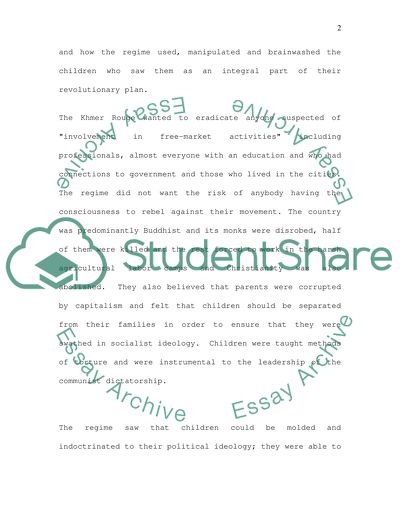Cite this document
(The Use of children in the Cambodian genocide Essay, n.d.)
The Use of children in the Cambodian genocide Essay. https://studentshare.org/history/1515834-the-use-of-children-in-the-cambodian-genocide
The Use of children in the Cambodian genocide Essay. https://studentshare.org/history/1515834-the-use-of-children-in-the-cambodian-genocide
(The Use of Children in the Cambodian Genocide Essay)
The Use of Children in the Cambodian Genocide Essay. https://studentshare.org/history/1515834-the-use-of-children-in-the-cambodian-genocide.
The Use of Children in the Cambodian Genocide Essay. https://studentshare.org/history/1515834-the-use-of-children-in-the-cambodian-genocide.
“The Use of Children in the Cambodian Genocide Essay”. https://studentshare.org/history/1515834-the-use-of-children-in-the-cambodian-genocide.


